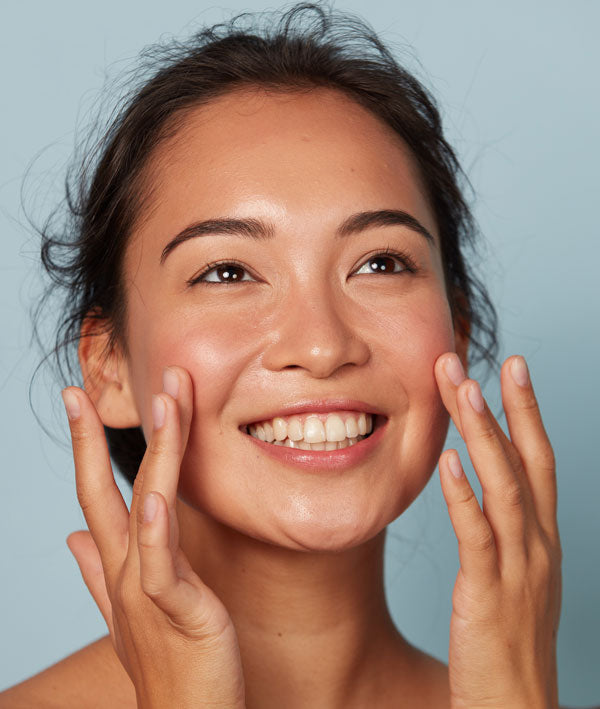Oil gritting is currently one of the hottest skincare trends on social media. But is it truly as effective as some users claim it to be, or is it just a gimmick? We’ve done some investigative work to help you determine whether it's worth adding to your routine.
What is Oil Gritting?
Oil gritting is a method designed for those with acne-prone skin and clogged pores. In theory, by using the power of an oil-based cleanser, the process helps dissolve impurities in the pores to promote a smooth, clear complexion.
Oil gritting is supposed to be particularly helpful for treating and preventing blackheads. Some say that it can also help diminish sebaceous filaments. These tubelike structures (which look like blackheads) line the pores, and help guide sebum and other debris out of the pores. However, when you have overactive oil glands, these sebaceous filaments can make the pores look more prominent. This is why many try to minimize their appearance.
How Does It Work?
With the oil gritting method, you take an oil cleanser and use it to massage your skin for 10 to 15 minutes. The idea is that the massaging process and the oil itself will help break down and dissolve impurities in the pores and on the skin. As you massage your skin, proponents of the method say that you’ll feel small “grits” starting to form. These are allegedly sebaceous filaments and clogging debris that are drawn out of the pores.
There are a few variations to the process. Some people stop there, and go on to cleanse their skin and follow their standard skincare routine. Others recommend applying a clay mask to the skin once you are done with the massage (while the oil is still on your skin). This is meant to help further draw out pore-clogging debris to refine the pores and purify the skin. There are even some that recommend using a beta hydroxy acid mask in between the oil massage step and the clay mask step to further help dissolve debris stuck in the pores.
Main Targets of Oil Gritting
The main intention of the oil gritting method is to help the user achieve and maintain clear, smooth skin. By getting rid of excess sebum, dirt, and other debris in the pores, it is meant to help eliminate blackheads and sebaceous filaments, and also prevent them from forming in the first place. The process can also help promote smaller-looking pores, making it a potential treatment option for those battling enlarged pores.
Are the Results Substantial?
We have some bad news: oil gritting probably isn’t all that it is hyped up to be. The process of massaging your skin with an oil cleanser can help remove impurities from the surface of the skin. That said, the oil isn’t likely to penetrate the pores deeply enough to actually remove substantial clogs.
Additionally, the grit that proponents describe feeling likely isn’t actually sebaceous filaments or sebum build up. Rather, they are likely just exfoliating away dead skin cells on the surface of the skin, which ball up into these small grits.
Oil gritting can provide some minor physical exfoliation that can help improve the skin’s texture and clear away some debris that might have otherwise contributed to clogged pores. That said, it’s not going to make a major difference in reducing breakouts or refining the pores.
It’s also important to acknowledge how oil gritting can actually be aggravating to the skin. Massaging the skin for that long can cause irritation and inflammation, especially if you use too much pressure. If you decide to also work in a clay mask and a BHA product, you’re going to increase your risk of causing irritation, dryness, and skin barrier damage even more.
Ultimately, you likely aren’t getting any additional benefits than you would from using an oil cleanser in a more traditional way. Given that the process can also be irritating, it’s likely best to use alternate methods for unclogging pores and tackling breakouts.
Serums to Use Instead of Oil Gritting
While oil gritting might not give you the results you’re after, there are thankfully some other tried-and-true methods for decongesting the pores, tackling breakouts, and promoting clear, smooth skin.
Serums made with chemical exfoliants are ideal for these skin issues. Beta hydroxy acids (BHAs) like salicylic acid are the ideal choice for tackling acne and clogged pores. These types of chemical exfoliants are oil-soluble and work deep in the pores, where they are able to unclog excess sebum and debris.
If you also want to address texture issues, look for a serum that contains alpha hydroxy acids (AHAs), such as glycolic or lactic acids. While BHAs penetrate the pores, AHAs work on the surface of the skin to improve irregular texture and tone.
Keep in mind that chemical exfoliants can be drying. To counteract dryness, use your exfoliating serums in tandem with a gentle, lightweight hydrating serum, which can help quench the skin to keep it soft and supple.






